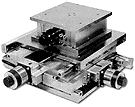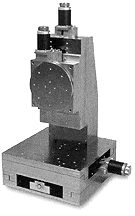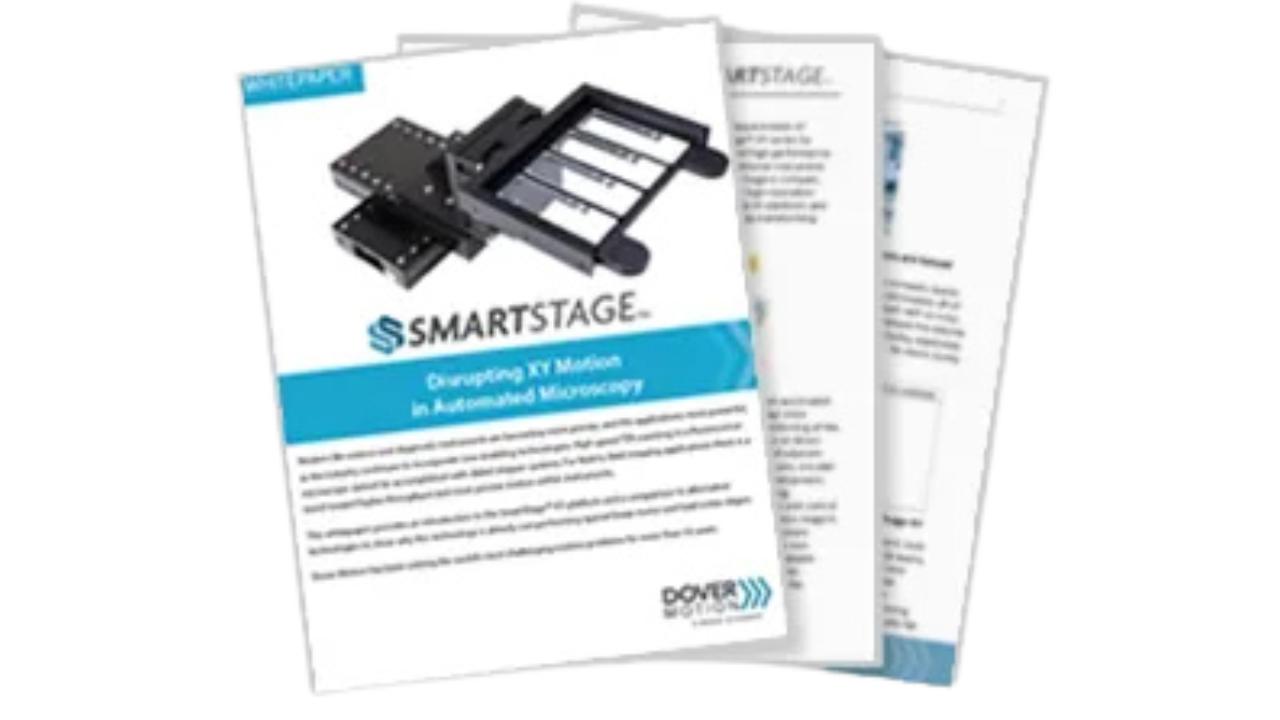High Vacuum Positioning Tables
Most standard DOVER positioning tables are available with optional preparation for use in high vacuum systems operating down to 10-7 torr.


These tables follow specific, high vacuum compatible design rules resulting in outgassing rates below 1 x 10-5 torr-liter/second per axis.
In conventional positioning tables, a number of outgassing sources are present which corrupt high vacuum systems. Among these are the motors, lubricants, metal finishes, table materials and design. Our vacuum prepared stepping motors are extensively modified and incorporate 220 degree C magnet wire, teflon leadwire insulation and lacing, and a specialized bearing lubricant. All remaining stepping motor materials are selected for high vacuum compatibility and the finished motor undergoes a bake-out at 85 degrees C for 8 hours at 10-7 torr.
Lubricants are especially prone to outgassing and, if not properly selected, may condense on critical optical or semiconductor surfaces within the vacuum chamber. We use specialized perflorinated polyether lubricants that achieve vapor pressures of 9 x 10-9 torr at 100 degrees C.
Conventional anodization, the standard surface treatment for DOVER products, vastly increases the tables’ surface area and its tendency to absorb water vapor. This entrapped water vapor then constitutes a virtual leak which may require days to pump away. Vacuum prepared tables are finished with an electroless nickel plating that minimizes water vapor retention.
Vented, stainless steel fasteners are used on all blind tapped holes, eliminating trapped pockets of air. Any remaining cavities are similarly relieved to allow a rapid pump-down. Teflon insulated wires with fluxless solders are used on all connectors. A final three-stage cleaning process, followed by nylon-gloved assembly, further ensures a low overall outgassing rate. Upon request we can supply complete materials and procedures lists detailing design features of vacuum prepared tables.
In addition to the basic task of ensuring that the positioning stage does not corrupt the vacuum, there is also a need to avoid damage to the stage from the limited heat dissipation presented by the vacuum environment. All DOVER stepping motor controllers have an ‘idle’ capability, which allows the motor phase currents to be brought to a small fraction of their nominal value when not moving. To remove heating due to hysteretic iron losses, both stepper and servo drives can be filtered. We also have additional means of ensuring that thermal issues are properly managed as to avoid component failures due to overheating.
Whenever positioning stages are mounted within a high vacuum enclosure, there is a need to route the motor, limit, and encoder lines through the wall of the vacuum chamber. While some users are proficient at this, for others the sourcing and installation of appropriate connectors can be a real problem. We have designed dedicated feedthrough plates, which can route up to three axes of positioning stages through the chamber wall, and which are suitable for vacuum levels above 1 x 10-7 Torr. See Figure 34. We offer both rectangular and circular versions. Unlike conventional circular connectors, these feedthrough plates separate the motor lines from limit and encoder signals for maximum noise immunity, and provide locking, strain relieved interconnects on both sides of the vacuum chamber. They also interface directly to standard DOVER cable sets and motion controllers on the atmospheric pressure side, and accept specialized, vacuum compatible DOVER cables for the run from the chamber wall to the high vacuum stage.

